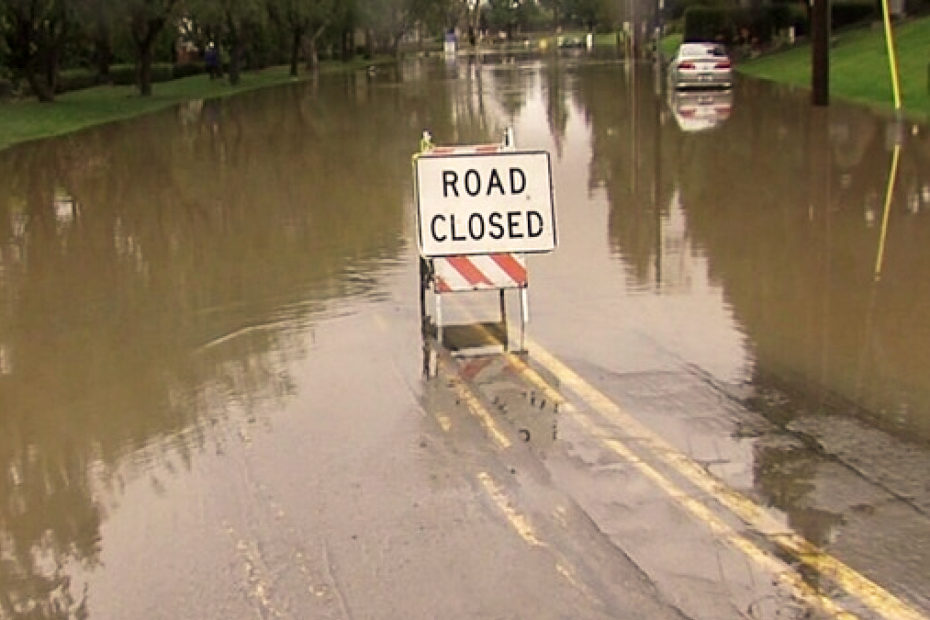Staying Safe During Flash Floods: Recognizing Warnings And Taking Action

Table of Contents
Understanding Flash Flood Warnings and Watches
Knowing the difference between a flash flood watch and a warning is crucial. A flash flood watch means conditions are favorable for flash flooding to develop. This is the time to prepare. A flash flood warning, however, means flooding is occurring or is imminent – you need to act immediately.
Warnings are disseminated through various channels:
-
National Weather Service (NWS) Weather Radio: A dedicated NOAA weather radio is your best bet for continuous, reliable alerts.
-
Mobile Alerts (e.g., Wireless Emergency Alerts - WEA): Sign up for emergency alerts on your smartphone. These alerts can provide crucial real-time information about flash floods in your area.
-
Local News: Television and radio stations provide updates during severe weather events.
-
Flash Flood Watch: Conditions are favorable for flash flooding. Monitor the weather closely and be ready to act.
-
Flash Flood Warning: Flash flooding is occurring or is imminent. Take immediate action to protect yourself and your family.
-
Multiple Warning Sources: Don't rely on just one source. Use a combination of weather radio, mobile alerts, and local news for comprehensive coverage.
-
Signing Up for Emergency Alerts: Most smartphones are capable of receiving emergency alerts. Check your phone's settings to ensure you're enrolled in the WEA system and similar services offered by your local authorities. You can also often sign up for specific alerts through your local government's website.
Identifying Flash Flood Risk Factors
Understanding the risk factors for flash floods in your area is paramount to preparedness. Certain geographic locations and weather conditions significantly increase the likelihood of flash flooding:
-
Geographical Factors: Mountainous areas, canyons, and areas with poor drainage are particularly vulnerable to flash floods. Water accumulates rapidly in these locations, leading to sudden and severe flooding.
-
Weather Conditions: Intense rainfall, thunderstorms, and rapid snowmelt can all trigger flash floods. Be especially vigilant during periods of heavy precipitation or rapid temperature changes.
-
Recognizing Signs of Impending Flash Floods: Rapidly rising water levels, strong currents, and debris in waterways are all clear indicators of an imminent flash flood. If you see these signs, move to higher ground immediately.
-
Understanding Your Local Flood Risk: Consult flood maps and historical flood data provided by your local government or the FEMA (Federal Emergency Management Agency) website. This information will help you understand your individual risk and plan accordingly.
-
Urbanization and Land Development: Increased urbanization and the alteration of natural drainage patterns can exacerbate the risk of flash floods. Impermeable surfaces like roads and buildings prevent water from absorbing into the ground, leading to rapid runoff.
Emergency Preparedness for Flash Floods
Having a comprehensive flash flood preparedness plan is essential. This includes creating a family communication plan and preparing for potential evacuation.
- Developing an Evacuation Plan: Identify potential evacuation routes and designate a family meeting point. Practice your evacuation plan regularly so everyone knows what to do in an emergency.
- Gathering Emergency Supplies: Assemble an emergency kit with essential supplies including water (one gallon per person per day for at least three days), non-perishable food, a first-aid kit, flashlights, extra batteries, a battery-powered radio, and important documents in a waterproof container.
- Knowing High-Risk Areas: Identify high-risk areas in your community and plan alternative routes to avoid these areas during flash floods.
- Securing Important Documents and Valuables: Secure important documents (insurance policies, identification) and valuable items in waterproof containers and move them to a safe, elevated location.
Actions to Take During a Flash Flood
When a flash flood warning is issued, immediate action is crucial. Your safety is the top priority.
- Move to Higher Ground Immediately: If a flash flood warning is issued, move to higher ground immediately. Do not wait for the floodwaters to approach.
- Never Drive Through Flooded Areas—Turn Around, Don't Drown: Floodwaters are far more powerful than they appear. Even a few inches of rushing water can sweep a vehicle away.
- Avoid Downed Power Lines: Downed power lines pose a significant electrocution risk during a flash flood. Keep a safe distance from any downed lines and report them to the authorities immediately.
- If Trapped, Seek Refuge on the Roof or Upper Floor: If you are trapped in a building by floodwaters, move to the highest level and call for help.
- Call for Emergency Assistance: Contact emergency services (911) if you need help or if you witness a dangerous situation.
Conclusion
Staying safe during flash floods requires a multi-faceted approach. By understanding flash flood warnings, identifying risk factors, preparing an emergency plan, and taking prompt action during a flood, you significantly increase your chances of survival. Remember the key takeaways: prepare a family communication plan, gather emergency supplies, know your local flood risks, and never drive through floodwaters. Staying informed about weather alerts through multiple sources is crucial for avoiding flash floods and ensuring your safety. Create your flash flood preparedness plan today and stay informed about weather alerts at [link to National Weather Service website or other relevant resource]. Taking proactive steps towards flash flood safety will save lives and protect your property.

Featured Posts
-
 Arrest Of Dave Turmel Canadas Top Fugitive Captured In Italy
May 26, 2025
Arrest Of Dave Turmel Canadas Top Fugitive Captured In Italy
May 26, 2025 -
 Martin Compston Transforming Glasgow Into A Hollywood Thriller
May 26, 2025
Martin Compston Transforming Glasgow Into A Hollywood Thriller
May 26, 2025 -
 Maccabi Tel Aviv Extends Lead In Israeli Premier League
May 26, 2025
Maccabi Tel Aviv Extends Lead In Israeli Premier League
May 26, 2025 -
 Pourquoi Vous Ne Devriez Pas Chercher A Debloquer La Rtbf
May 26, 2025
Pourquoi Vous Ne Devriez Pas Chercher A Debloquer La Rtbf
May 26, 2025 -
 Hsv Aufstieg Und Die Zukunft In Der Bundesliga Nach Sieben Jahren
May 26, 2025
Hsv Aufstieg Und Die Zukunft In Der Bundesliga Nach Sieben Jahren
May 26, 2025
Latest Posts
-
 Ecole Bouton D Or Florange Urgence Remplacement Des Agents Et Infestation De Rats
May 30, 2025
Ecole Bouton D Or Florange Urgence Remplacement Des Agents Et Infestation De Rats
May 30, 2025 -
 Assemblee Nationale Frontieres Et Chaos Le Bras De Fer Rn Lfi
May 30, 2025
Assemblee Nationale Frontieres Et Chaos Le Bras De Fer Rn Lfi
May 30, 2025 -
 Inquietude A Bouton D Or Probleme De Rats Et Manque De Remplacement A Florange
May 30, 2025
Inquietude A Bouton D Or Probleme De Rats Et Manque De Remplacement A Florange
May 30, 2025 -
 Assemblee Nationale Le Rn Et Lfi Une Bataille Pour Le Controle Du Recit
May 30, 2025
Assemblee Nationale Le Rn Et Lfi Une Bataille Pour Le Controle Du Recit
May 30, 2025 -
 Integrale Europe 1 Soir 19 Mars 2025 Replay
May 30, 2025
Integrale Europe 1 Soir 19 Mars 2025 Replay
May 30, 2025
